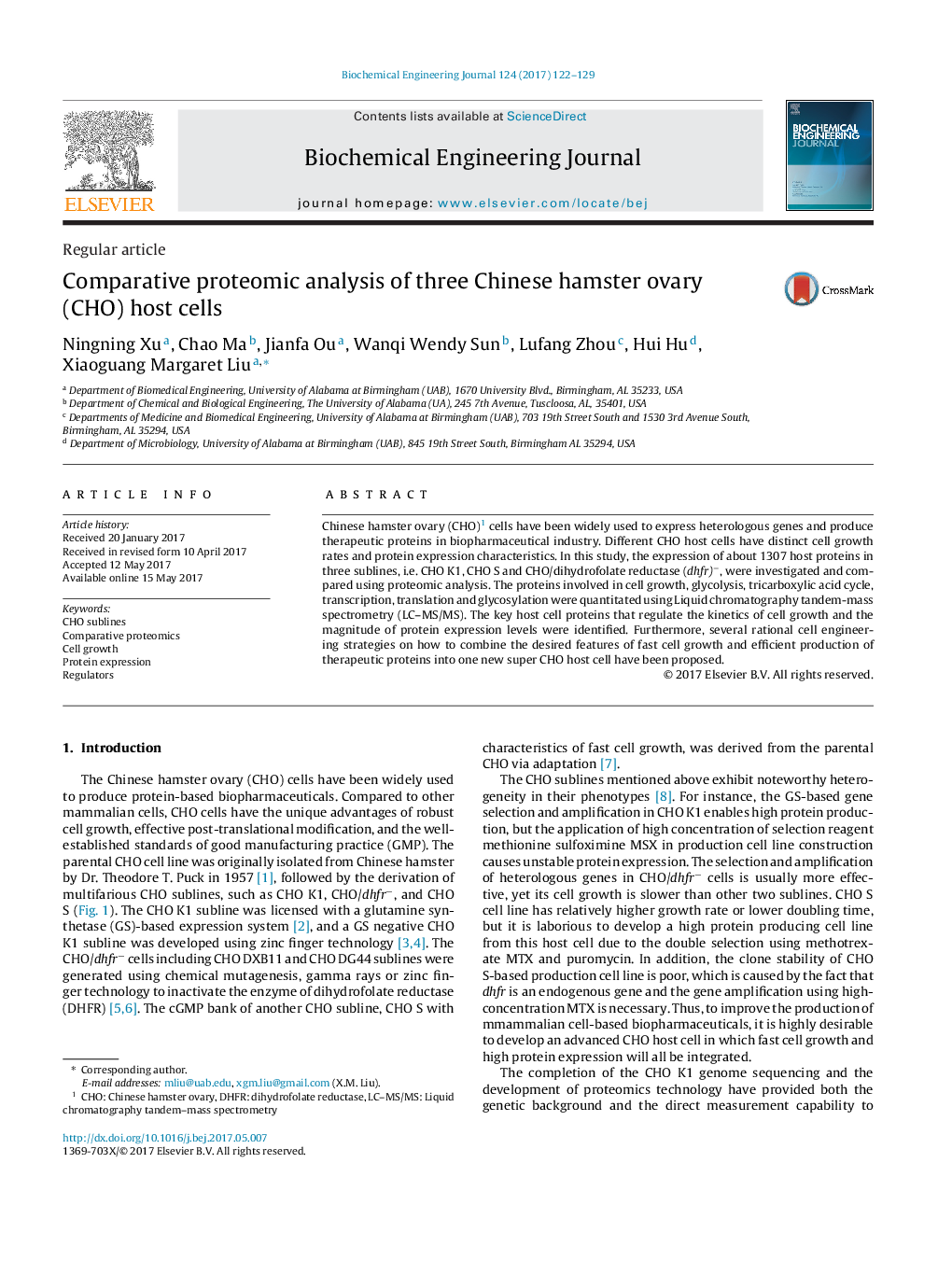| Article ID | Journal | Published Year | Pages | File Type |
|---|---|---|---|---|
| 4752162 | Biochemical Engineering Journal | 2017 | 8 Pages |
â¢Comparative proteomic analysis of three CHO sublines was performed.â¢Host cell proteins regulating cell growth and protein expression were identified.â¢Rational cell engineering strategies were proposed.
Chinese hamster ovary (CHO)1 cells have been widely used to express heterologous genes and produce therapeutic proteins in biopharmaceutical industry. Different CHO host cells have distinct cell growth rates and protein expression characteristics. In this study, the expression of about 1307 host proteins in three sublines, i.e. CHO K1, CHO S and CHO/dihydrofolate reductase (dhfr)â, were investigated and compared using proteomic analysis. The proteins involved in cell growth, glycolysis, tricarboxylic acid cycle, transcription, translation and glycosylation were quantitated using Liquid chromatography tandem-mass spectrometry (LC-MS/MS). The key host cell proteins that regulate the kinetics of cell growth and the magnitude of protein expression levels were identified. Furthermore, several rational cell engineering strategies on how to combine the desired features of fast cell growth and efficient production of therapeutic proteins into one new super CHO host cell have been proposed.
